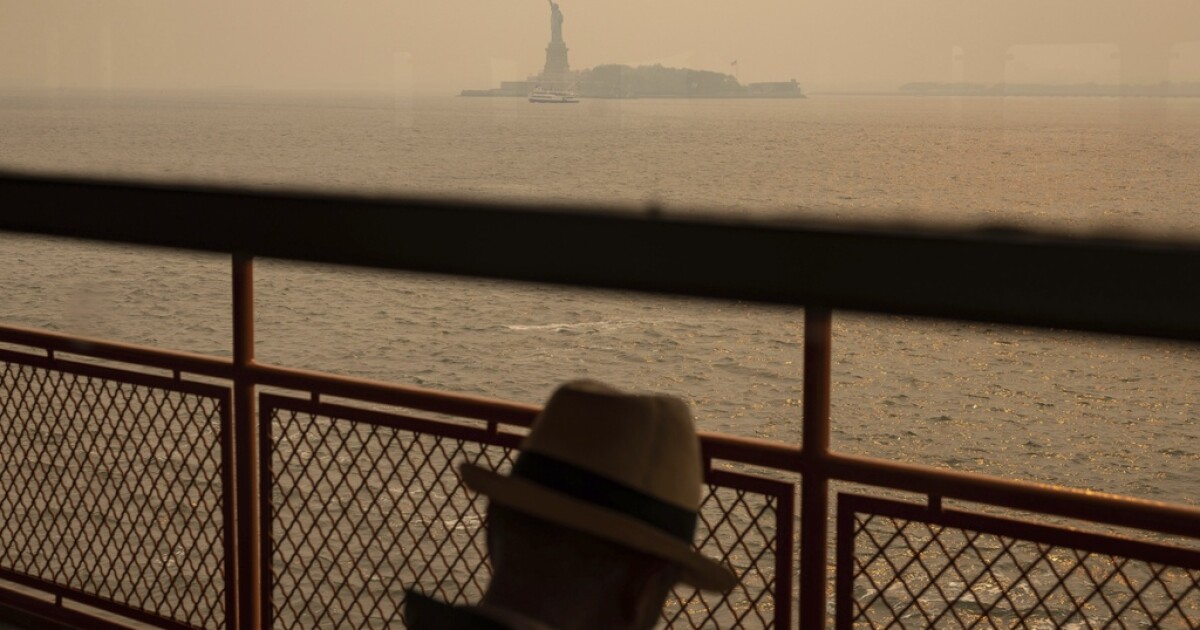
When Anti-War ‘All Quiet on the Western Front’ Provoked Nazi Backlash, Shocking Hollywood
“Out Jews!” howled Josef Goebbels. “A dirty film made in America!” The Nazi propagandist was on his feet in the front row of the balcony at Berlin’s ornate Mozartsaal, frothing at the motion picture screen. Behind Goebbels, dozens of brown shirted thugs joined in the jeering — and released white mice and set off stink bombs. Women screamed and stood on their seats. Moviegoers bolted for the exits; several patrons, taken for Jews, were beaten up. The house lights went up, the theater was cleared, and the show was shut down. [*]
The date was December 5, 1930, and the American-made film was All Quiet on the Western Front (1930), Universal Pictures’ epic version of German novelist Erich Maria Remarque’s antiwar best seller. Eight years shy of a century later, the Germans have gotten around to making their own version — a Netflix production, directed by Edward Berger, which premiered at the Toronto International Film Festival on Sept. 12 and submitted as Germany’s official Academy Award entry for Best International Feature of 2022. Yet no matter how artistically worthy or commercially successful, the German remake will not match the impact of the Hollywood original. It is not an exaggeration to say that the film made history — and not in the way the filmmakers intended.
Related Stories
The reaction to the release of All Quiet on the Western Front in Germany marked an early Hollywood encounter with the pathological race hatred of a theretofore unknown political party. In The Hollywood Reporter, a brash industry-centric daily that had just begun publication the previous September, editor-publisher Billy Wilkerson felt compelled to define an unfamiliar word for his readership: “The Nazis—as the National Socialists are called—,” he explained in an editorial condemning the violence at the Mozartsaal. A week earlier the trade paper had misinformed its readers that the Nazis were “German Communists.” Soon enough, no one in Hollywood would need a footnote.
As the news of the incident spread, there was the sense that the protest was not the standard-issue dust-up over a controversial film. The Weimar Republic was reported to be “greatly agitated” over the incident and feared the Nazis would exploit the agitation “to uproot the entire government.” Wilkerson warned that “the military spirit of the German people . . . is only dormant not dead” and that the militarism was “comparatively easy to revive — much easier than one would imagine.” Variety did not mince words about the other motive animating the Nazis: “Berlin Riot Over All Quiet as Much Anti-Semitic As Anything Else.”
No one was more shocked by the uproar than Universal’s president and founder Carl Laemmle, himself a proud son of Germany. Born in 1867 in the city of Laupheim in what was then the Kingdom of Württemberg, Laemmle had immigrated to America at the age of seventeen and not only thrived with the emergent motion picture industry but helped create it — defeating the monopolistic Edison Trust in court in 1915 and opening Universal City studios outside Los Angeles that same year. While living the American dream, he retained a strong bond with what he still referred to affectionately as his Fatherland. After the Great War, he sent tons of food and supplies to war-ravaged Germany. In the 1920s, he established a slate of productions in Germany, drawing on his plentiful relatives to staff the operations.
In 1929, looking at the international sales figures from Remarque’s novel, Laemmle saw more than an opportunity for a profitable motion picture project. Remarque had made war itself — not the soldiers of the belligerent nations — the common enemy of all mankind. Not too long ago, the German soldier was demonized in Allied war propaganda. Now he was embraced as a brother, a victim no less than the French, the English, and the Americans of the “horrors, frights, amputations, privations and deaths” of industrial strength mass slaughter. Determined to give the world “a message of peace and nothing more,” Laemmle visited Remarque at the spa resort in Carlsbad, Czechoslovakia, and convinced the author that Universal would be true to his antiwar sentiments, that there would be no thrilling battlefield glory, no mushy love story. At a cost of $1.2 million, the film would be worthy of its source.
Laemmle turned over the reins of production to a carefully chosen associate: his twenty-one-year-old son, Carl Jr., known as “Junior Laemmle” around town. Rival moguls were skeptical that the kid was up to the task — and dubious about the vision that he shared with his father. A big budget war picture without an English or American soldier? And where the sympathetic protagonist — hero is not the right word — dies in the end?
Screenwriter Del Andrews and playwrights George Abbott and Maxwell Anderson adapted the book and Russian born director Lewis Milestone helmed the project. Himself a veteran of the photographic unit of the U.S. Army Signal Corps, Milestone prioritized verisimilitude, importing $27,000 worth of authentic German field equipment — uniforms, gas masks, trenching tools. The battle scenes were shot at a ranch in Irvine, CA, a location whose encampment covered 5,000 acres, with 1,000 extras and technicians bivouacked in tents like doughboys. A trench a mile in length was dug, with a 1,000-foot concrete pavement built for tracking shots.
To plunge civilian audiences in the terror of no man’s land, Milestone meticulously orchestrated an element still new to film grammar — sound. Audiences were bombarded by the deafening thunder of explosions, the escalating screeching of incoming shells, and the jackhammer racket of machine guns. The synchronous soundtrack also let Milestone exploit perhaps the scariest combat “sound” of all — silence. Throughout, unlike so many early sound films where the camera seems bolted to the floor, Milestone’s camera is mobile and expressive, notably during a Soviet-influenced montage where troops are mowed down in rhythm to machine gun fire.
The ending of the film is as famous as any in 1930s cinema. As Paul, the doomed cannon fodder played by newcomer Lew Ayres, reaches out from behind a pile of sandbags to touch a butterfly, a rifle shot rings out and stills his hand. Milestone told film historians Kevin Brownlow and David Gill that the idea came to him when he and cameraman Karl Freud were driving through a heavy rain. As Freund watched the windshield wipers move mechanically back and forth, he kept muttering, “Der Schmetterling, der Schmetterling.” (“The butterfly, the butterfly.”)
All Quiet on the Western Front premiered at the 1,500-seat Carthay Circle in Los Angeles on April 21, 1930, and a week later at the 1,100-seat Central in New York, before going into wide release. By most accounts, audiences did not applaud. They just sat for a moment, stunned, and walked out silently.
The reviews were rhapsodic, unprecedently really. “The best war picture ever filmed” (Variety), “Nobody should miss it,” (New York Mirror), “The epic picture of the war” (New York American), and on and on. The enthusiasm was fueled by the fierce antiwar sentiment that swept the nation in the wake of the European death match. In the Film Daily, Jack Alicoate reserved his highest praise for the pacifist message: “the most compelling argument against the horrors of war that has yet been spoken, printed, or filmed.” MGM’s Louis B. Mayer telegrammed Laemmle with congratulations for a film “which carries on the work of the book in depicting the message of the hopelessness of war and the eternal brotherhood of man.”
At the Academy Awards that year, All Quiet on the Western Front easily won the trophy for “Outstanding Production” (as the “Best Picture” category was then called) and Milestone earned top honors for directorial achievement. Beyond Hollywood, there was serious talk of giving Laemmle the Nobel Peace Prize.
In America, the film ran into surprisingly little censorship trouble, despite the blood, the vulgarity, and a risqué scene where the German soldiers cavort with a bevy of friendly French girls. The strict regulations of the Production Code would not kick in until 1934, and the film’s credentials and high-minded purpose kept the prudes at bay.
Laemmle figured that the Germans might be less openminded. To forestall trouble, the German Counsel General in San Francisco was flown down to Universal City to preview the film; he didn’t like what he saw, so the studio flew in a German newspaperman from New York, for a second opinion. Eventually, a revamped made-for-Germany version passed muster. (I suspect that among the deletions was a series of insolent wisecracks by character actor Slim Summerville about “me and the Kaiser.”)
Despite the stateside vetting, the Supreme Film Censor Board in Germany initially banned the film. However, Universal successfully appealed the decision and All Quiet on the Western Front was granted a formal green light for exhibition on November 24, 1930.
On December 4, 1930, the film opened at the Mozartsaal — without incident. As in America, the German audience was too overwhelmed and emotionally drained to applaud.
It was at the next night’s screening that the Nazis descended in force. Probably tipped off by an agent attending on opening night, Goebbels timed his outburst to coincide with a scene in which the green German troops panic during an artillery barrage. By coincidence, among the crowd that night was another figure who would play a prominent role in the Nazi film future — Leni Riefenstahl, who said she first laid eyes on Goebbels during the pandemonium.
For the next six days, Goebbels followed up his in-theater protest with torchlit parades, marching hundreds of brownshirts in front of the Mozartsaal to demand that All Quiet on the Western Front be banned and the print burnt — else the theater itself would go up in flames. He accused Hollywood’s Jews and their German kinsmen of conspiring to slander the memory of the nation’s heroic warriors: “While the theater is packed with `Asiatic nomads’ with their wives bedecked with jewelry, this shameful film, stabbing our love for the eternal soldier is being allowed!” he raved. “We warn those who are ruling that Adolf Hitler stands at the door ready to march in!”
Appalled, Laemmle responded from Hollywood with a 1,000-word telegram, in German, which he paid to have published in the German press. “I am amazed that All Quiet on the Western Front should be threatened with hostility and misunderstanding in a country that has benefited most from it,” he wrote. He regarded the film “which has done more to establish good will toward the German people than any factor since the Armistice” as the capstone of his twenty-five years in the motion picture industry. Ultimately, Laemmle remained convinced “that the good sense of the German people will not permit unfair treatment of this film, which has done so much for their best interests.”
That was wishful thinking. The trembling officials of the Weimar Republic capitulated and banned the film on the grounds that it “damaged Germany’s reputation.” Of course, everyone from Berlin to Hollywood knew the real reason. “We Have Forced Them to Their Knees!” crowed the headline in Der Angriff, the Nazi newspaper.
Yet the saga of All Quiet on the Western Front was not quite over. In April 1931, a scrubbed version of the film described as “completely revised in certain sequences and generally toned down to meet with German [read: Nazi] sentiments” was submitted for clearance. After prolonged debate, the Reichstag, the German Parliament, declared the film unharmful to Germany and rescinded the ban.
By then, Goebbels had moved on. All Quiet on the Western Front had had served its purpose: the Nazis had exposed the Weimar Republic as a paper tiger, recast the Great War as a noble defense of the Fatherland, and smeared Hollywood as the propaganda arm of American Jews.
For his part, Laemmle realized that the Germany he had grown up in was no longer his Fatherland: he became the most fervent anti-Nazi in Hollywood. For the rest of the decade, until his death in 1939, he worked tirelessly to get Jews and other menaced people out of Germany — signing affidavits, lending money, and arranging jobs for the refugees.
On January 30, 1933, Hitler ascended to the German chancellorship and Josef Goebbels was appointed Reichsminister for Public Enlightenment and Propaganda. Now in full control of the levers of media power, they determined to eradicate all vestiges of All Quiet on the Western Front from German memory. Copies of Remarque’s book provided kindling for the notorious book burnings on May 10, 1933. Universal’s film version was officially banned later that month. It would not be screened again in Germany — that is, West Germany — until March 1952. No disruptions of any kind, inside or outside the theaters, were reported.
Endnote
[*] Contemporary accounts of the melee that night and what exactly Goebbels shouted vary. The antisemitic invective was surely cleaned up in American press accounts. Most agree on “Juden raus!” (“Out Jews!”) and “Judenfilm!” (“Jewish film!”). One account says the brownshirts also released snakes, though I find that unlikely. The Jewish manager of the Mozartsaal, Hanns Brodnitz, gives a vivid recollection in a posthumous memoir, Intimate Cinema: Forgotten Biography (2005). Brodnitz was murdered at Auschwitz in 1944.





























































